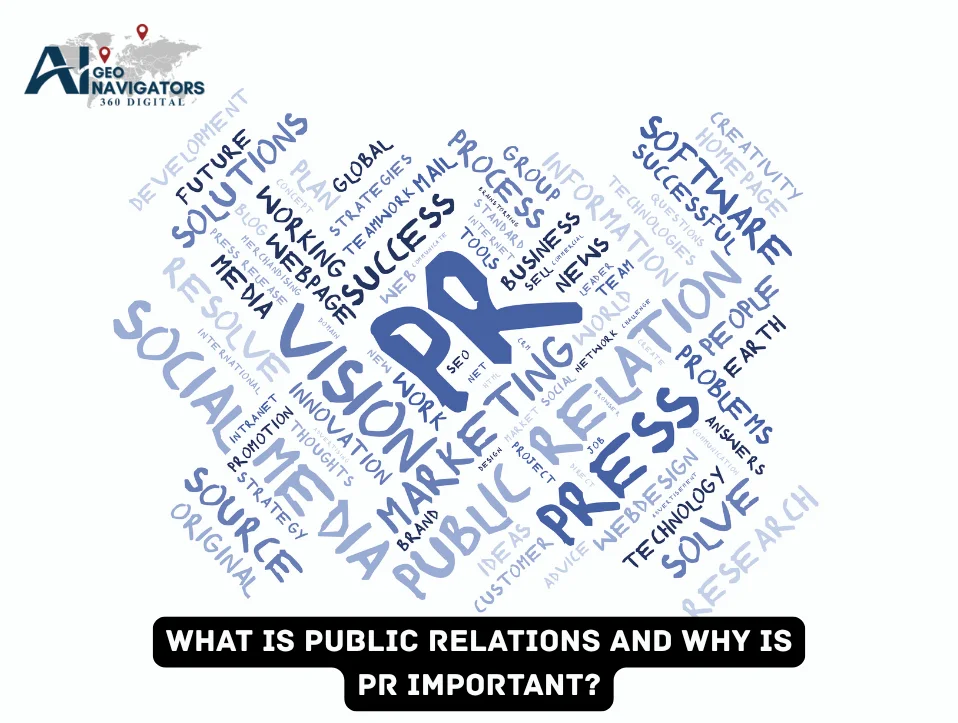In today’s hyperconnected world, reputation is everything. A company can have the best products, a celebrity can have millions of followers, or a politician can give powerful speeches, yet one wrong message, tweet, or misinterpreted statement can spark a global backlash within hours.
That’s where Public Relations (PR) steps in. PR is not about spinning stories or manipulating truth; it’s about managing perception through honest, consistent, and strategic communication.
When done right, public relations build bridges between brands and customers, between organizations and communities, between people and their ideas. In this blog, we’ll explore what PR really is, why it’s essential, how it works, and how it has evolved in the age of digital transparency.
Understanding Public Relations
Public Relations can be defined as the strategic communication process that builds mutually beneficial relationships between organizations and their publics.
The key phrase here is mutually beneficial relationships. PR isn’t just about publicity; it’s about trust, understanding, and credibility.
In simple words:
Public relations is how an organization communicates with the world to shape how people think and feel about it.
That communication can take many forms press releases, interviews, social media engagement, public events, internal updates, crisis management, or storytelling campaigns.
Unlike advertising, where brands pay for visibility, PR is about earning attention and respect through credibility. A well-written news story or a respected influencer’s endorsement carries more weight than a paid ad because it feels authentic and unbiased.
Origins and Evolution of PR
While PR seems modern, its roots go back centuries. Ancient leaders, monarchs, and philosophers used public speeches and messages to influence citizens. But formal PR began in the early 20th century.
The Early Years
- Ivy Lee, often called the father of modern PR, introduced the idea of honesty and transparency in corporate communication.
- Edward Bernays, a pioneer in behavioral psychology, emphasized understanding public emotions to shape opinion.
Their work turned publicity from manipulation into a professional discipline rooted in psychology, communication, and ethics.
Core Functions of Public Relations
Public relations operates on several core functions. Each plays a vital role in shaping the organization’s image and ensuring communication runs smoothly.
Reputation Management
Your reputation is your most valuable asset. PR ensures that the public perceives your organization positively by managing narratives, promoting achievements, and addressing misinformation.
Example: When a company recalls a faulty product and communicates transparently about it, PR helps turn a potential scandal into an example of responsibility.
Media Relations
Media is the voice that reaches millions. PR professionals build strong relationships with journalists, editors, and news outlets. They pitch stories, arrange interviews, and respond to queries ensuring the company’s voice is accurately represented.
Crisis Communication
When disaster strikes a data leak, product failure, or public backlash PR becomes the first responder. Crisis communication involves planning, quick action, and honest messaging that protects reputation and restores public confidence.
Internal Communication
Employees are your first brand ambassadors. Internal PR keeps them informed, motivated, and aligned with the organization’s vision through newsletters, events, and internal campaigns.
Community Relations and CSR
Public relations connects the company with its community through corporate social responsibility (CSR). Activities like sustainability drives, education programs, and charity initiatives show that the brand cares about people, not just profit.
Public Affairs and Government Relations
Many businesses need to engage with government institutions or policy makers. PR professionals manage those relationships to ensure compliance, advocacy, and alignment with public policies.
Investor and Stakeholder Relations
For listed companies, PR handles communication with investors and financial analysts sharing earnings, strategies, and progress transparently.
Event Management
Product launches, trade shows, and conferences all fall under PR’s umbrella. Events give media and the public firsthand experiences with the brand.
Why Public Relations Is So Important
PR Builds Credibility and Trust
Advertising tells people what you want them to hear. PR helps others say it for you media, influencers, satisfied customers. That’s why earned media coverage carries higher trust.
When people read about you in credible outlets, they assume you’re legitimate.
It Protects You During Crises
Every organization faces tough times. The difference between those who recover and those who collapse often comes down to PR.
Crisis PR manages panic, keeps messages consistent, and ensures the truth is heard before rumors spread.
It Shapes Brand Image and Identity
Public relations gives your brand a voice, personality, and purpose. A good PR strategy communicates what you stand for — innovation, responsibility, creativity, or social good.
It Enhances Visibility and Awareness
Without PR, many great companies remain invisible. Media mentions, podcasts, and industry features bring exposure that paid ads can’t buy.
It Strengthens Relationships
PR builds ongoing, meaningful connections with customers, media, employees, and stakeholders. This continuous engagement builds loyalty.
It Supports Business Growth
Investors, partners, and customers prefer organizations with strong reputations. PR creates that trust, attracting opportunities and collaborations.
Public Relations vs. Marketing vs. Advertising
Many confuse PR with marketing or advertising, but they serve different roles.
| Aspect | Public Relations | Marketing | Advertising |
| Goal | Build reputation & trust | Drive sales & demand | Promote specific products |
| Nature | Earned (media coverage, word of mouth) | Paid or owned | Paid |
| Approach | Two-way communication | Persuasive, targeted | One-way promotion |
| Outcome | Credibility & goodwill | Revenue & conversions | Awareness & exposure |
When PR, marketing, and advertising work together, they create a powerful communication ecosystem. Marketing sells, advertising promotes, but PR builds trust.
Key Components of a PR Strategy
To understand how PR works, let’s break down its building blocks.
Research
Every campaign starts with research. Understanding audience behavior, sentiment, competitors, and media landscapes.
Planning
Define your objectives (awareness, trust, crisis control), key messages, tone, audience, and timeline.
Content Development
PR thrives on stories. Craft narratives that are newsworthy human stories, achievements, innovation, or impact. Develop press releases, blog posts, interviews, and social media content.
Media Outreach
Identify relevant journalists, editors, and bloggers. Send personalized pitches that highlight the story’s value, not just self-promotion.
Execution
Coordinate press conferences, distribute releases, manage events, post online updates, and maintain engagement.
Monitoring and Feedback
Track coverage, public sentiment, and engagement metrics. Learn what worked and what didn’t.
Evaluation
Use KPIs like media impressions, website traffic, brand mentions, sentiment analysis, and conversion support to measure PR success.


No responses yet